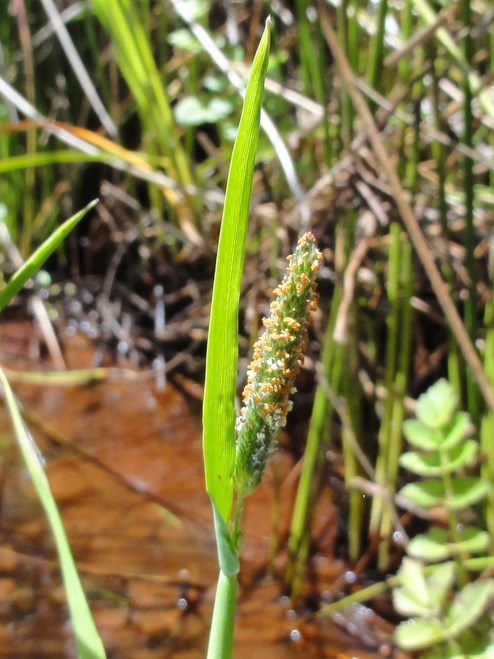Last updated: February 5, 2021
Article
Reinstituting Grazing to Save an Endangered Plant

NPS
January 2021 - Barbed wire fencing doesn't typically invoke visions of endangered species conservation, but sometimes it can help in unexpected ways.
Point Reyes National Seashore is home to more than 50 rare, threatened, or endangered species. Among them is Sonoma alopecurus (Alopecurus aequalis var. sonomensis). It’s an unassuming, perennial grass that grows up to 2.5 feet tall in wet soils and freshwater marshes, and it's federally endangered. Though once found at sites across Sonoma and Marin Counties, it may no longer occur anywhere outside of Point Reyes. Much of its former wetland habitat has been destroyed or significantly altered for development and agriculture. Ecologists have tried a couple of times to expand its range via reintroductions without success. In other words, protecting the remaining wild populations in the park couldn’t be more important to Sonoma alopecurus’ long-term survival. That's why when ecologists found an almost 10-fold decline in one of the park’s largest populations, they knew they needed to take action.

NPS / Eric Wrubel
The population in question is located in a marsh among the dunes on a parcel on the Point Reyes peninsula formerly owned by AT&T. Its decline coincided with the end of cattle grazing in the area a number of years ago. As it turns out, periodic grazing is a good thing for Sonoma alopecurus. Ecologists suspect it helps by reducing the abundance of adjacent plant species and giving the endangered grass more space to thrive.
Initially, the park worked with ranchers to bring back prescribed grazing with the help of electric fencing around the area where the Sonoma alopecurus population occurs. The effort did not last long. Unstable soils, high winds, and cattle disturbance caused the fence to fall over, minimizing the effectiveness of grazing efforts.
So, the park and the ranchers tried again. Over the last five years, Point Reyes has worked to install a barbed wire fence along the wetland. In 2020, the park applied for and received a regional NPS block grant to finish the final 2,000 feet of fence construction. Completed in November, the new fence allows Sonoma alopecurus habitat to be efficiently, intensively grazed during the winter when the grass is not flowering or setting seed. Ecologists will continue monitoring the population every year to see how it responds.
For more information
-
Contact Point Reyes Vegetation Ecologists Lorraine Parsons or Brent Johnson
-
Point Reyes Threatened, Rare, & Endangered Plants webpage
